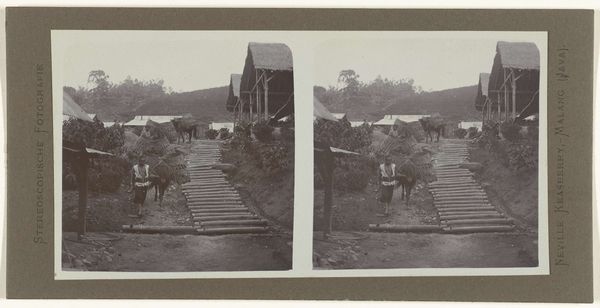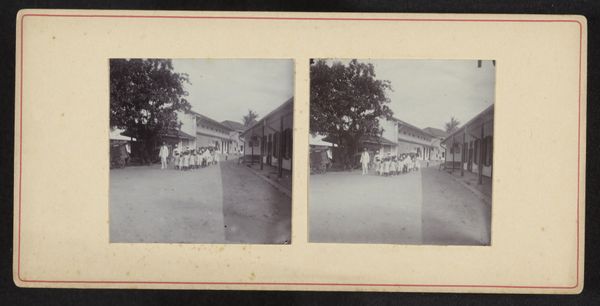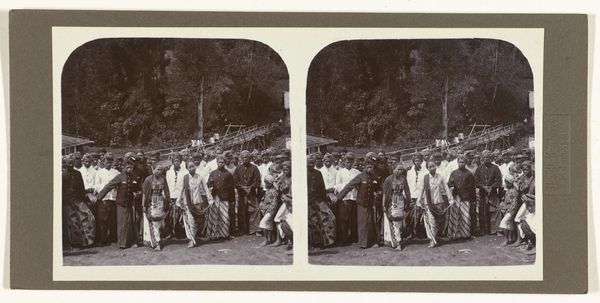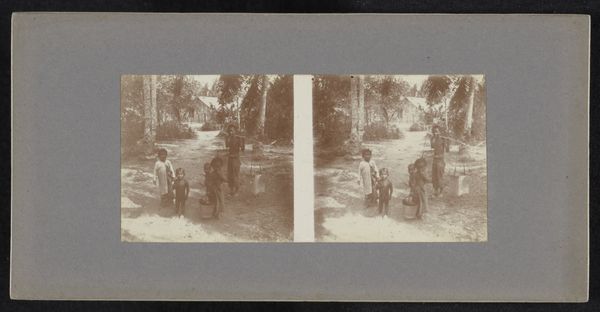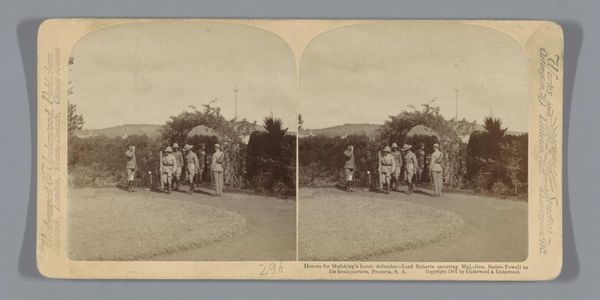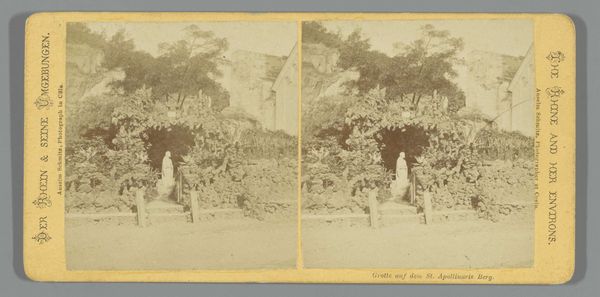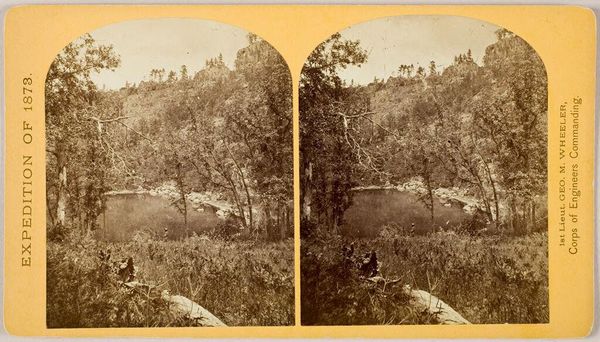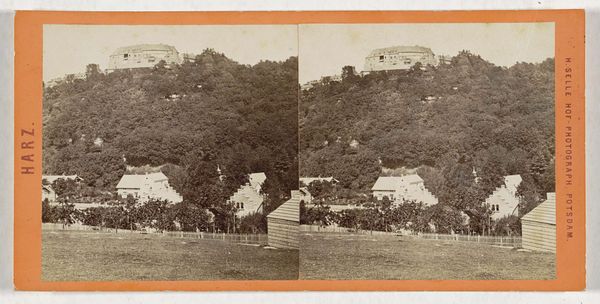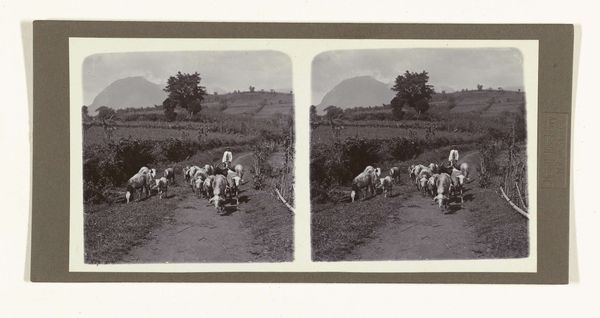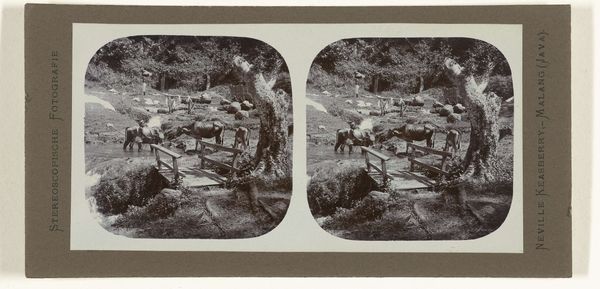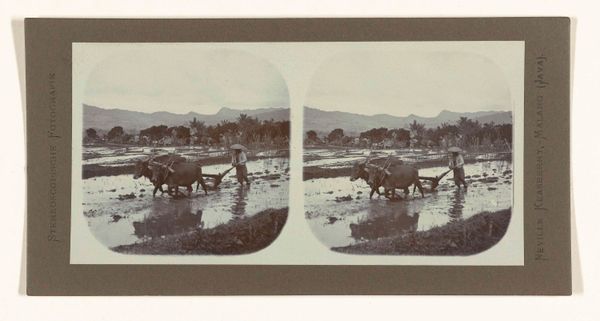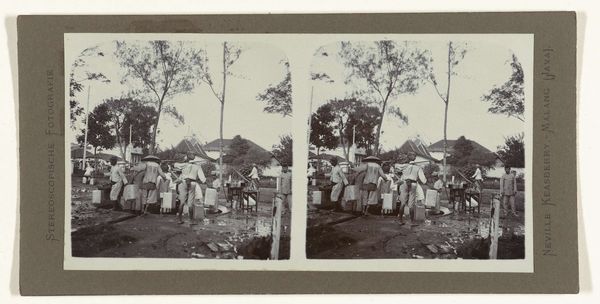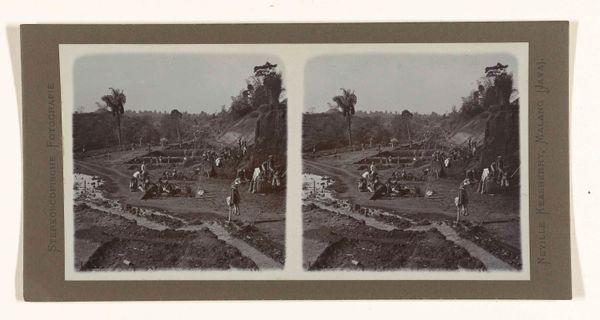
print, photography, gelatin-silver-print
#
portrait
# print
#
asian-art
#
landscape
#
photography
#
orientalism
#
gelatin-silver-print
Dimensions: height 76 mm, width 152 mm
Copyright: Rijks Museum: Open Domain
Curator: This gelatin-silver print, entitled "Wassende vrouwen in een beekje op Java", or "Bathing women in a stream on Java," was created by Neville Keasberry sometime between 1900 and 1935. Editor: It strikes me as incredibly composed; there’s a palpable stillness and serenity despite being a relatively active landscape scene. The tonal range is very effective for this stereoscopic photograph. Curator: Yes, the almost monochromatic tones truly emphasize the forms. Observe how Keasberry used the landscape to structure the image, dividing the foreground, mid-ground, and background in horizontal bands with these two women bathing in the creek in the foreground. We could analyze this image from the perspective of structuralism by studying this kind of clear organization of the image space. Editor: I see it more as an early Orientalist trope. The representation of native women bathing. It conjures all kinds of ethnographic questions and speaks to the voyeuristic gaze inherent in the colonial project of that period, particularly the romanticization of indigenous peoples, masking more exploitative social practices. What’s the power dynamic at play? Curator: Undoubtedly, there's the risk of romanticizing life in Java. But look at the linear design of the flowing water; how it interacts with the soft naturalism of the grassy embankments, contrasting that with the simple, almost geometrical houses, and those majestic hills. It presents an aesthetically compelling arrangement. Editor: Aesthetically compelling perhaps, but ethically complex. Photography has historically perpetuated a one-sided narrative. How do we know the women consented to be photographed, let alone that it would be viewed outside of their local community? Considering it's a stereoscopic photograph—meant to be viewed in three dimensions with a special viewer—we're not just casually looking; we are immersed, drawn deeper into an unequal interaction. It reminds us of the role photography has historically played. Curator: The photographic clarity creates visual harmony. Ultimately, it is about how form represents essence and is, I suppose, the key to its appeal and longevity. Editor: It invites us to be conscious consumers, aware of the multifaceted contexts surrounding a deceptively tranquil image.
Comments
No comments
Be the first to comment and join the conversation on the ultimate creative platform.
